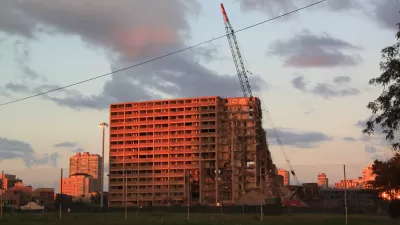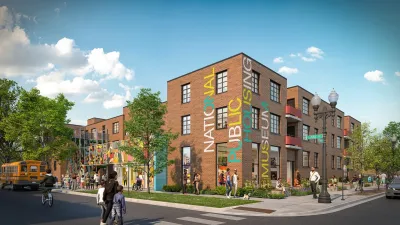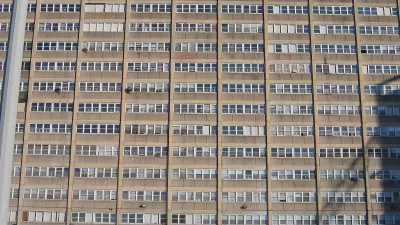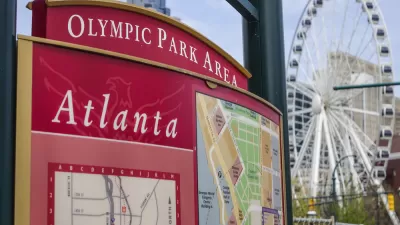A new book tells the story of Chicago's Cabrini-Green and reflects on what the lives of the people in this public housing project have to say about the lives of all Americans.

The last of Cabrini-Green's high-rise buildings was demolished in 2011, but the housing project's impact continues to be felt. High-Risers: Cabrini-Green and the Fate of American Public Housing, by Ben Austen, tells the story of Cabrini-Green in an immediate way. "By placing the stories of people at the forefront of the narrative, Austen invites us to bear witness history, not a lecture. He narrates how parents fought to improve conditions at overcrowded Jenner Elementary; how residents lobbied an unresponsive CHA to fix broken elevators and replace lights; and when Hubert started a drum and bugle corps called the Corsairs that practiced on the fields adjacent to the high-rises," Przybyl writes for South Side Weekly.
Austen's book tells the story of how policy and population changes in the city changed the building and how the project that stood close to the homes of the wealthy became increasingly isolated from its neighbors. "But as time went on, these requirements changed and demographic shifts—including Chicago’s declining population—influenced who was able and willing to live at Cabrini," Przybyl writes.
Pryzbyl shares one particularly affecting story from the book: "On the first day of school, Kelvin couldn’t stop crying in front of the white teacher—'Although Kelvin had sprinted past countless white people on the streets of the Near North Side, he’d never before exchanged two consecutive sentences with one.'"
FULL STORY: The Personal Histories of Public Housing

Maui's Vacation Rental Debate Turns Ugly
Verbal attacks, misinformation campaigns and fistfights plague a high-stakes debate to convert thousands of vacation rentals into long-term housing.

Planetizen Federal Action Tracker
A weekly monitor of how Trump’s orders and actions are impacting planners and planning in America.

San Francisco Suspends Traffic Calming Amidst Record Deaths
Citing “a challenging fiscal landscape,” the city will cease the program on the heels of 42 traffic deaths, including 24 pedestrians.

Defunct Pittsburgh Power Plant to Become Residential Tower
A decommissioned steam heat plant will be redeveloped into almost 100 affordable housing units.

Trump Prompts Restructuring of Transportation Research Board in “Unprecedented Overreach”
The TRB has eliminated more than half of its committees including those focused on climate, equity, and cities.

Amtrak Rolls Out New Orleans to Alabama “Mardi Gras” Train
The new service will operate morning and evening departures between Mobile and New Orleans.
Urban Design for Planners 1: Software Tools
This six-course series explores essential urban design concepts using open source software and equips planners with the tools they need to participate fully in the urban design process.
Planning for Universal Design
Learn the tools for implementing Universal Design in planning regulations.
Heyer Gruel & Associates PA
JM Goldson LLC
Custer County Colorado
City of Camden Redevelopment Agency
City of Astoria
Transportation Research & Education Center (TREC) at Portland State University
Jefferson Parish Government
Camden Redevelopment Agency
City of Claremont





























